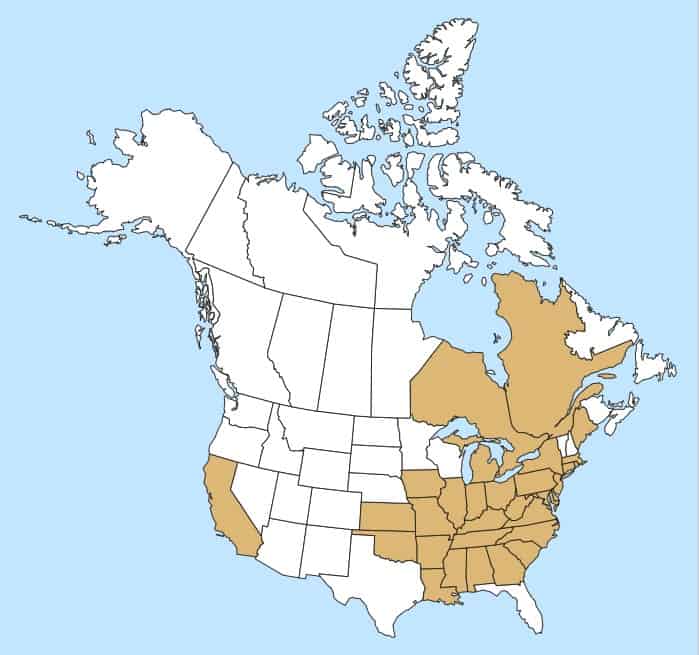Allium vineale
Explore More :
Explore plus :
Overview
Aperçu
Regulation :
Remarques Réglementation:
- Quarantine lists of countries e.g. India *may be updated without notice
Regulation Notes:
On quarantine lists of countries e.g. India*.
*Quarantine lists of countries may be updated without notice.
Distribution :
Répartition :
Wild garlic is native to Mediterranean regions of northern Africa, western Asia and southern Europe as well as the Caucasus and temperate Europe (USDA-ARS 2017). It was introduced to North America and Australia (GBIF 2017; USDA-NRCS 2017). In the United States, it is found in eastern and Pacific states as well as some central states (USDA-NRCS 2017).
Habitat and Crop Association :
Habitat et Cultures Associées :
Wild garlic occurs in disturbed areas often adjacent to agriculture areas (FNA 2017), vineyards, lawns, old fields, forest edges, roadsides and disturbed areas (Darbyshire 2003).
Economic Use, cultivation area, and Weed Association :
Utilisation économique, zone de culture et association de mauvaises herbes :
Duration of Life Cycle :
Durée du cycle vital:
Perennial
Dispersal Unit Type :
Type d’unité de dispersion :
Bulbils or seeds (seeds are not described here)
General Information
RENSEIGNEMENTS GÉNÉRAUX
The small, wheat-sized bulbils often contaminate wheat and impart unwanted flavour to breads and cow’s milk (when used as feed) (FNA 2017).
.
Allium vineale bulbils (Ohio State Weed Lab , The Ohio State University, Bugwood.org)
Identification
Identification
-
Bulbil
Size
- Bulbil length: 4.2 – 9.4 mm (average: 5.7 mm); width: 1.7 – 5.9 mm (average: 3.0 mm)
Shape
- Spindle-shaped bulbil; one or both ends may be truncate
Surface Texture
- Bulbil surface wrinkled
Colour
- Bulbils are dull, vary from light to dark brown
- The top layer of the bulbil is translucent
Other Features
- Bulbils can be onion-scented
- Bulbils may rarely be found within a papery, light-coloured perianth

Wild garlic (Allium vineale) bulbils





Identification Tips
CONSEILS POUR L’IDENTIFICATION
Additional Botany Information
AUTRES RENSEIGNEMENTS BOTANIQUES

Allium vineale inflorescence and flowers (Ohio State Weed Lab , The Ohio State University, Bugwood.org)




Similar Species
ESPÈCES SEMBLABLES
Similar species are based on a study of seed morphology of various species, and those with similar dispersal units are identified. The study is limited by physical specimen and literature availability at the time of examination, and possibly impacted by the subjectivity of the authors based on their knowledge and experience. Providing similar species information for seed identification is to make users aware of similarities that could possibly result in misidentification.
Bulbils are vegetative organs, not seeds or fruits in botanical terms. No similar seeds or fruits will be found as impurities in seed or grain samples.
Click to select species
Cliquez pour sélectionner les espèces
Comparison Window
Fenêtre de comparaison
MAIN SPECIES
ESPÈCES PRINCIPALES
Allium vineale

Allium vineale
Amaryllidaceae
Wild garlic (Allium vineale) bulbils
MAIN SPECIES
ESPÈCES PRINCIPALES
Allium vineale

Allium vineale
Amaryllidaceae
Wild garlic (Allium vineale) bulbils
MAIN SPECIES
ESPÈCES PRINCIPALES
Allium vineale

Allium vineale
Amaryllidaceae
Wild garlic (Allium vineale) bulbils
MAIN SPECIES
ESPÈCES PRINCIPALES
Allium vineale

Allium vineale
Amaryllidaceae
Wild garlic (Allium vineale) bulbil
MAIN SPECIES
ESPÈCES PRINCIPALES
Allium vineale

Allium vineale
Amaryllidaceae
Wild garlic (Allium vineale) bulbil
Need ID Help?
Besoin d’aide pour l’identification?
Reference(s)
Référence(s)
Darbyshire, S. J. 2003. Inventory of Canadian Agricultural Weeds. Agriculture and Agri-Food Canada, Research Branch. Ottawa, ON.
Flora of North America (FNA) Editorial Committee, eds. 1993+. Flora of North America North of Mexico [Online]. 22+ vols. New York and Oxford. http://beta.floranorthamerica.org. Accessed April 25, 2017.
Flora of North America (FNA) Editorial Committee, eds. 1993+. Flora of North America North of Mexico [Online]. 22+ vols. New York and Oxford. Accessed December 29, 2022.
Global Biodiversity Information Facility (GBIF) Secretariat. 2017, GBIF Home Page. https://www.gbif.org Accessed April 25, 2017.
Global Biodiversity Information Facility (GBIF) Secretariat. 2022. https://doi.org/10.15468/39omei Accessed via https://www.gbif.org/species/7792960 Accessed December 29, 2022.
U.S. Department of Agriculture-Agricultural Research Services (USDA-ARS). 2017. Germplasm Resources Information Network (GRIN), https://npgsweb.ars-grin.gov/gringlobal/taxon/taxonomysearch Accessed April 25, 2017.
U.S. Department of Agriculture-Natural Resources Conservation Service (USDA-NRCS). 2017. The PLANTS Database. National Plant Data Team, Greensboro, NC USA. https://plants.usda.gov/home Accessed April 25, 2017.




